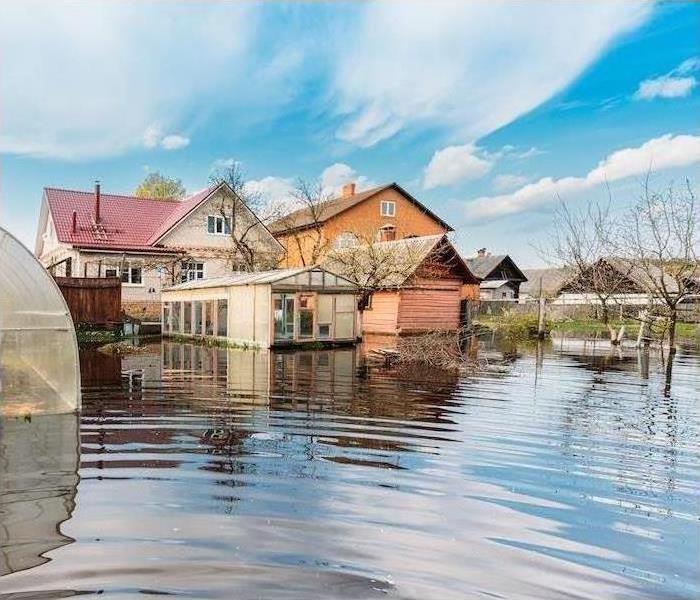Flood Safety for the Inside & Outside of Your Home
10/8/2024 (Permalink)
 Experienced water damage in your home? Call SERVPRO of Billings to get the restoration process started right away.
Experienced water damage in your home? Call SERVPRO of Billings to get the restoration process started right away.
Regardless of where you live, it is important to make sure you are protected from floods. As little as an inch of water can cause damage and cost any property owner quite a bit in repairs.
If you do not live in an area that has frequent flooding, you may not qualify for a lot of financial help through insurance or other sources. This means that every preventive measure you can take is crucial.
Flooding is a fairly common occurrence for us in Billings and our surrounding areas. In the warmer seasons, the rivers around us are consistently challenged by heavy rains. This makes it essential to know your risks so that you can properly prepare your home and ensure your family’s safety.
Protecting Your Home From the Outside
Flooding cannot always be anticipated with a great deal of time to prepare. Pop-up storms can dump huge amounts of water in a short amount of time that causes puddles to form around your home and overwhelms your gutter systems.
Protecting your home starts with preparing from the outside.
Clean gutters are crucial in ensuring water flows away from your home. With the heavy rains we can frequently experience in June and July, adding an extended downspout to your gutter system could be helpful to prevent overflow and puddling.
You can also use landscaping to protect the bottom level of your home. Gardens pull water down into soil and roots, which means heavy rains are absorbed faster and puddles are avoided.
Organic materials like mulch are also helpful when added to the area immediately outside of your home. Create a slope with these materials to force water away and avoid wet basements or bottom floors.
There are a few upgrades you can consider to protect your home in extreme weather as well, including elevating electric outlets and anchoring fuel tanks if you use one. While those may seem like high-end additions, adding an inexpensive rain barrel that catches water directly from one of your downspouts can be a helpful way to prevent water gathering. And bonus: It means saving money when you water all your beautiful plants!
Flood Protection From the Inside
Two of the best ways to protect the inside of your home are sealing your basement and tackling any cracks in your foundation.
A sump pump in the basement that kicks in when water enters can also be a helpful tool in keeping your home dry. If you live in a high-risk area, a battery-operated pump might be the best idea so you are ensured it will work even if the power goes out.
For flooding that doesn’t start outside, there are a few ways to protect your home with basic home maintenance.
Plumbing is one of the biggest sources of water damage inside the home, particularly pipes that are aged or failing. If you have a leaky faucet, get it fixed quickly and make checking all of your plumbing a regular habit so that other leaks don’t start.
You can also consider adding a leak sensor that will tell you if water is suddenly somewhere it shouldn’t be. Home security systems will sometimes offer this as an add-on or upgrade, so if you were considering having a new system put in, spring for this addition and rest a little more peacefully.
No matter where it comes from, water will damage paper goods and photographs immediately. Store irreplaceable items on high shelves or in a water-tight container.
Make sure you also know where your emergency contacts are stored, and consider adding SERVPRO® to the list. The faster you call us, the sooner your recovery starts.
Experienced water damage in your home? Call SERVPRO today to get your restoration completed faster.




 24/7 Emergency Service
24/7 Emergency Service